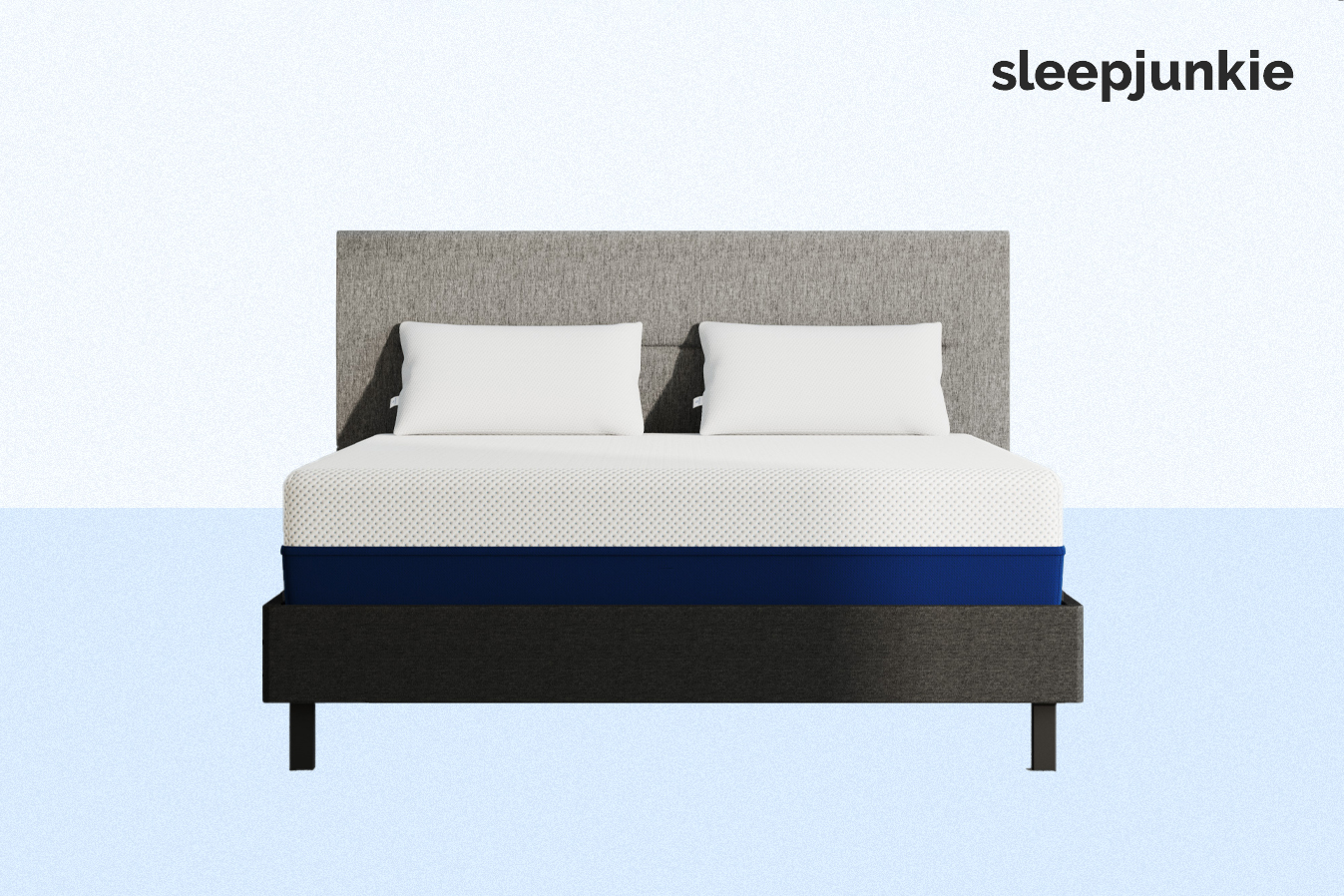
Can You Sleep On A Memory Foam Mattress Before 24 Hours?

First, we’d like to congratulate you on your first mattress in a box. Whether your new memory foam mattress is a memory foam mattress, latex, or a hybrid, it takes time to expand after unpackaging. You’ve probably heard the myth cautioning you to avoid sleeping on your bed while it expands, but in this article, we explain why that’s not absolutely necessary.
Most companies ask you not to sleep on your memory foam mattress before 24 hours after you’ve unboxed the bed to ensure the quality of their product is at its fullest potential when you sleep on it for the first night. But when nighttime rolls around and its time to go to sleep, waiting to use your new bed can be inconvenient. Some sleepers may not even have their old mattress to use one more night if they opted for white glove delivery.
So, what happens when you sleep on a memory foam bed before those 24 hours are up? In our article, we’ll discuss how long you should really wait before using your foam mattress and what you can do to minimize the wait.
Can I Go To Sleep Right After the New Memory Foam Mattress Has Expanded?

Truth is, you can sleep, roll around, and step on your new memory foam mattress as much as you want while it expands. Regular mattress use will only decrease the material’s expansion time.
If you want to sleep on it before the 24-hour mark, just remember the mattress won’t feel its very best until it expands to its full size. If the first night on your new bed isn’t all you’d dreamed it’d be, give it more time before calling for a return. If a mattress has a ten-inch profile, then you need to wait until it’s expanded to 10 inches tall and the corners have grown to their full shape. If your bed is still uncomfortable after full expansion, then it’s time to call.
A few bloggers suggest waiting to put your new memory foam mattress protector and sheets on your new bed only after the corners have fully extended. However, in our experience, we’ve found you don’t have to wait for the corners to take shape to go to bed, as you’re typically not sleeping on the corners of the mattress; this lets those corners continue to expand throughout the night. Mattress protectors and sheets are not tight enough to prevent the corners from expanding and should not have an impact on your bed’s expansion time.
There are a few reasons why manufacturers don’t want the bed used within 24 hours of unrolling. The 24-hour rule exists mainly as a precaution to ensure the mattress has fully extended and there’s no damage to the bed’s foam.
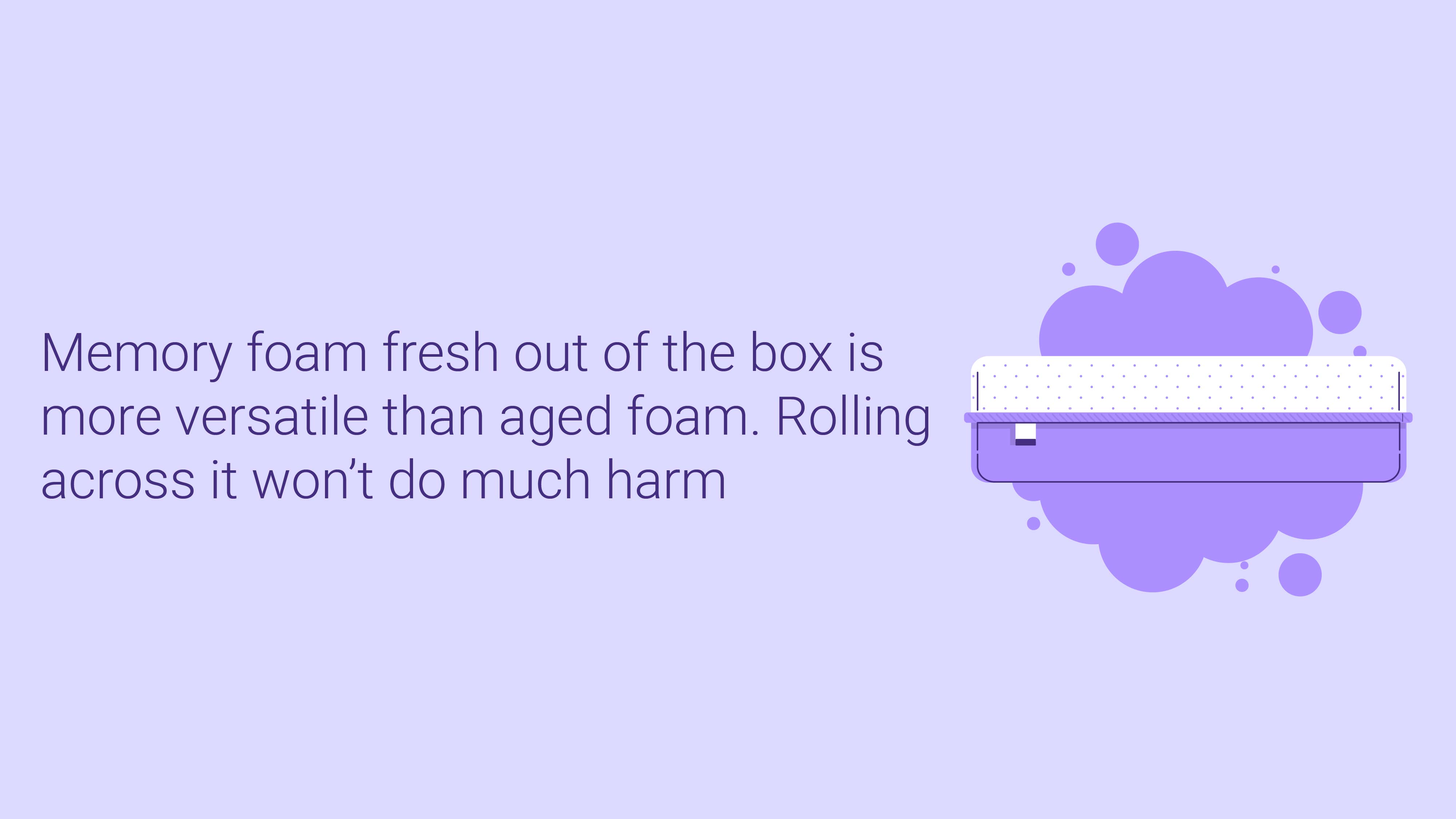
However, a memory foam mattress fresh out of the box is more versatile than aged foam. Rolling across it won’t do much harm. If the mattress doesn’t assume its original shape after the allotted expansion period, then the foam layers may be defective. Contact the company for exchange or return information.
The second reason why brands want you to wait to sleep on their beds is the risk of off-gassing. Nobody wants to fall asleep on a chemical-smelling bed, and jumping to sleep on a freshly unpackaged mattress may be unpleasant. While most foam mattresses are CertiPUR-US® certified, there still are slight off-gas smells. Letting your bed air out for the allotted off-gassing time prevents you from dealing with any unpleasant scents.
Why Choose a Memory Foam Mattress?
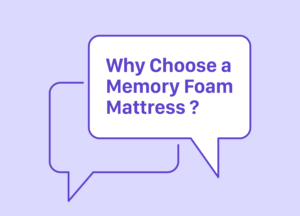 With so many mattress types available, why might a memory foam mattress be the bed for you? There are a few factors that contribute to memory foam’s popularity, such as its affordability and comfortable feel.
With so many mattress types available, why might a memory foam mattress be the bed for you? There are a few factors that contribute to memory foam’s popularity, such as its affordability and comfortable feel.
Plus, the wait for its full expansion aside, a memory foam mattress is often a highly convenient mattress to order and set up. You can purchase an online mattress that’s shipped right to your front door, never once needing to leave your home.
Memory foam is also consistently recommended as one of the top materials for pain relief. Lastly, a memory foam mattress can serve as an affordable hypoallergenic mattress for allergies. The dense foam layers of a memory foam mattress prevent allergens from settling inside the bed.
Our Memory Foam Mattress Recommendation
The Amerisleep AS3 is our top memory foam mattress recommendation not just for taking only a few hours to fully expand, but for its versatile medium feel and eco-friendly mattress design. Most sleeping styles can stretch out on the AS3 and feel comfortable, making it excellent for partners who want to share a bed.
The top layer of the AS3 is breathable and responsive Bio-Pur® foam. This foam is more eco-friendly than traditional memory foam as Amerisleep produces it with plant-derived oils, along with standard ingredients.
The middle layer of the AS3 is Affinity foam with HIVE® technology. The surface underneath the shoulders and hips are flexible and cushioning, while the head, torso, and feet are focused on support.
The base layer of the AS3 is Bio-Core® foam. This sturdy material reinforces the mattress’s structure, increasing its expected lifespan to maximize the bed’s value.
Wrapped around the AS3 is a plush, breathable cover of Refresh fabric. Aside from its soft feel, Refresh relies on technological, thermoreactive minerals to convert body heat into infrared energy, which then penetrates the body to boose local bloodflow.
The Amerisleep AS3, like all Amerisleep mattresses, comes with free shipping, a 100-night sleep trial, and a 20-year warranty.
AMERISLEEP AS3
- Responsive memory foam made partly with plant-derived oils
- Targeted support for five areas of the body boosts comfort
- Sturdy base foam ensures mattress longevity
Why Are Memory Foam Mattresses Boxed Up?
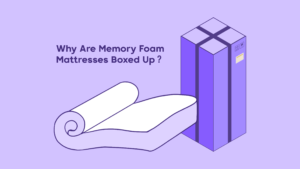 The entire reason bed in a box mattresses exist is for easier shipping. A mattress in a box that’s been compressed and rolled up takes up less space in a delivery vehicle. This means mail order mattresses can travel relatively easily across the country to arrive at a shopper’s front door.
The entire reason bed in a box mattresses exist is for easier shipping. A mattress in a box that’s been compressed and rolled up takes up less space in a delivery vehicle. This means mail order mattresses can travel relatively easily across the country to arrive at a shopper’s front door.
It can also be easier for shoppers to move a mattress on their own if the bed is boxed up, perhaps with the assistance of a dolly cart as the mattress can still feel quite heavy.
How Do I Speed Up the Expansion Process?
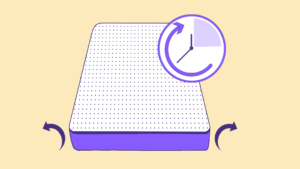 So the answer to “What happens if you sleep on a memory foam mattress before it’s finished expanding?” should be “It’s a little uncomfortable, but the mattress will be fine.” But is there a way to help the mattress expand faster so you can rest in comfort?
So the answer to “What happens if you sleep on a memory foam mattress before it’s finished expanding?” should be “It’s a little uncomfortable, but the mattress will be fine.” But is there a way to help the mattress expand faster so you can rest in comfort?
Constant movement, body weight, and heat activate the foam, loosening the material. Laying down on the mattress and rolling around for a few minutes as well as standing on the end of the mattress and walking around the edges should make it expand faster.
What if My Foam Bed Isn’t Expanding?
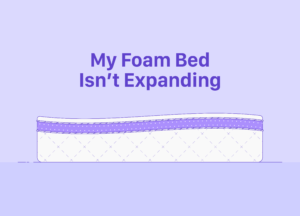 While some memory foam mattresses expand quickly, there are others that have a harder time expanding. If you run into this problem, try activating the memory foam mattress with body heat.
While some memory foam mattresses expand quickly, there are others that have a harder time expanding. If you run into this problem, try activating the memory foam mattress with body heat.
Roll around and walk on the memory foam mattress— almost as if you’re giving the bed a massage, try to no stomping or bouncing to prevent mattress damage— and sleep on it for a few days. Afterward, it should expand to its correct size.
Why Way of the Mattress Is Up?
When your mattress expands fully and takes shape, you might find yourself facing a puzzling dilemma: Which side should be facing up? Not all mattresses have two sides, especially memory foam mattresses that are designed for sleeping on just one side. But fret not! There are some clever tricks that can swiftly help you find the answer.
First, consider the mattress design. Some mattress manufacturers make the top and bottom clear by using different colors for each. More obviously, one side of the mattress may have a tufted, finished look like a pillow top mattress, while the other side has a plain and rougher look with a flat, non-skid surface.
Even if the mattress appears identical on both the top and bottom, you can still discern a difference. One side should yield more readily to your touch—it’s the side with the cozy padding where you’re supposed to sleep. The firmer side should face down.
Still not sure? Take a look at the mattress tag or label. This little tag is usually sewn onto one side of the mattress. Now, pay close attention: If you find the tag, it means that the opposite side, without the tag, should be facing up when you place the mattress on your bed frame.
If all these methods still leave you scratching your head, fear not! We recommend reaching out to the customer service team of your mattress brand. They should be able to help you resolve the issue and set up your mattress properly.
The Mattress Hasn’t Expanded After a Week!
 If a foam mattress doesn’t expand after five or seven days, then you most likely have a defective bed.
If a foam mattress doesn’t expand after five or seven days, then you most likely have a defective bed.
A mattress not expanding is very rare. But if you’ve given your mattress a whole week to expand and it hasn’t, call customer service to inform them of the defective mattress and initiate the return policy or warranty claim.
Taking Care of Your Foam Mattress
Whether you have a hybrid or a gel memory foam mattress, you’ll need to care for it properly to maintain its longevity. Innerspring and hybrid mattresses only need a box spring, whereas memory foam mattresses require a more sturdy foundation. All mattresses, though, need periodic cleaning.
Choosing a Foundation
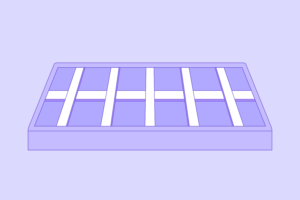 Foam beds need a solid, flat mattress foundation.
Foam beds need a solid, flat mattress foundation.
Flexible box springs work well with an innerspring and hybrid mattress; however, a memory foam mattress paired with this type of base will cause the middle to sag, resulting in discomfort.
Memory foam needs a bed frame with either a solid flat surface or a slatted base. Platform beds are a good option, as long as the slats are less than 2.75 inches apart to prevent the foam material from dipping; this could cause the mattress to deteriorate quickly and product indentations in the material.
Cleaning Tips
 Some foam mattresses have removable, machine-washable covers. If you have a mattress without a removable mattress cover, you’ll have to spot clean it with room temperature water mixed with mild detergent.
Some foam mattresses have removable, machine-washable covers. If you have a mattress without a removable mattress cover, you’ll have to spot clean it with room temperature water mixed with mild detergent.
It’s a good idea to vacuum the mattress at least once a month to remove loose foreign debris and any hair. These same cleaning tricks work on a mattress topper.
To save yourself the trouble of having to spot-clean a stained memory foam mattress, it’s best to cover the surface with a memory foam mattress protector.
Frequently Asked Questions
What is the best mattress to avoid body impressions?
Memory foam mattresses are excellent if you want a mattress that won’t retain body impressions. While the foam surface is quick to mold to your body, well-made memory foam is just as quick at snapping back into shape.
However, when it comes to durable resilience, it’s difficult to beat the potential of latex foam. The buoyant material can withstand wear and tear well enough that it can retain its shape after decades of use. See our memory foam vs latex mattress guide for a thorough comparison.
Can you damage a memory foam mattress by sleeping on it too soon?
No, sleeping on a high-quality memory foam mattress after unboxing it shouldn’t affect its structure. The reason the “give it a day to expand” rule exists is that a memory foam mattress won’t offer a truly comfortable, high-quality sleep experience until it reached its full shape.
If your mattress does feel saggy and unsupportive after unboxing, it’s more likely the bed is defective, in which case you should reach out to the mattress company and file a warranty claim.
Can you put a box spring under a memory foam mattress?
No, we do not recommend pairing a traditional box spring with a memory foam mattress. Box springs have supportive coils that are meant to deepen the bounce of a classic innerspring mattress. These interior coils are not spaced close enough to provide the consistent support that a heavier memory foam mattress needs, and that usually results in premature sagging and loss of comfort.
What are the disadvantages of a memory foam mattress?
One drawback to memory foam mattresses is that they cannot be made without synthetic materials. It’s possible to reduce the amount of petrochemicals used to make memory foam, resulting in eco-friendly plant-based memory foam mattresses.
Another drawback is that many low-budget memory foam mattresses do contain fiberglass, a material that has been criticized for its potential health effects if it escapes a mattress. However, as the dangers of fiberglass have become more widely known, many manufacturers have begun to make mattresses without fiberglass that rely on memory foam comfort.
Do all memory foam mattresses have a new mattress smell?
Yes, many memory foam mattresses have a faint chemical odor after unboxing. Known as ‘off-gassing,’ this smell results from volatile organic compounds breaking down after the mattress has been unpacked. For most sleepers, the smell is merely unpleasant and may take at most a few days to fade away. Using a mattress protector can make the smell less noticeable. If you can, you also let it air out in a spare room.
Do memory foam mattresses sag?
Yes, a memory foam mattress will eventually lose support, though a well-made memory foam mattress typically lasts longer than spring mattresses. Still, a high-quality memory foam mattress should be sag-free for about a decade, if it’s properly cared for by mattress owners. That means keeping the mattress on a supportive surface and rotating it regularly to even out wear and tear.
Conclusion
You now understand the rules behind allowing a foam mattress to expand and you have a few cleaning tips up your sleeve, dispelling one of the common mattress myths. You even know what to look for in foundations and bed frames that are best for foam mattresses. To learn more about maintaining your new mattress, read our other guides.

